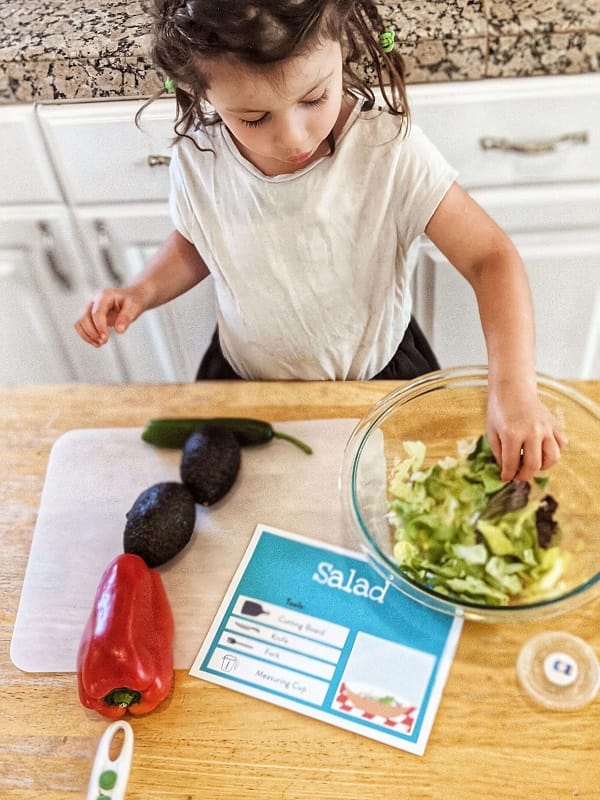Vitamins and Minerals. They’re important for something, right? Yes! But here are the 4 (or really 5) that you should focus on when it comes to the health of your kids.
Sodium & Potassium
These two minerals go together. Along with calcium, these are some of the electrolytes that help keep kids hydrated.
More on Sodium
When people hear “sodium” they probably think “salt”. Salt is critical to good cooking, due to its powerful flavor enhancing ability. Not only does it help bring out the flavor in other foods, it helps lessen our perception of bitterness. Salt is crucial for balancing out sweetness when you’re making dressings, cocktails and yes, even desserts.
Table salt is actually 60% sodium and 40% chloride. Sodium is a necessary part of our diets. We need it for nerve functionality and to maintain the correct balance of water in our bodies.
Why Too Much Sodium is a Bad Thing
But how much sodium do we need? About 500 mg a day. In contrast, the average American consumes 3,400 mg a day. So basically a week’s worth of sodium each day.
High sodium diets are linked to a lot of diseases. Heart failure, osteoporosis, kidney disease, certain types of cancer, stroke and headaches. The American Heart Association recommends 1500 mg of sodium a day for adults.
And this isn’t only a problem for adults. Kids consume an average of 3,100 mg of sodium a day. Kids who eat high sodium diets are twice as likely to have high blood pressure. And high blood pressure is linked to heart disease. Good habits start young, so it’s potentially life saving to start your child on a healthy path.

Where Sodium Comes From
The sneaky part of sodium is how easily is gets into our food. First of all, sodium exists in many healthy foods. Vegetables naturally contain sodium, as does milk. A glass of cow milk contains about 120mg of sodium. Fortunately, the majority of the sodium in our diets isn’t from natural sources.
And it’s not all coming from potato chips and pretzels (although for sure some of it is). Some of the saltiest foods are things you may even consider to be healthy. Pizza, deli meats and bread are some of the worst offenders. The good news is that about 70% of our sodium comes from packaged foods. So it’s really a contained (or boxed) problem. Which makes it much easier to solve
Why We Need Potassium
Potassium is the counterpart of sodium. It helps balance out the sodium in our systems so that our blood pressure stays normal.
But how much potassium do we need? Roughly 3 times the amount of sodium. So if you’re eating the recommended 1500 mg of sodium a day, then you also need about 4500 mg of potassium to balance it out.
Not surprisingly, we tend to have that ratio backward! Meaning way too much sodium and not nearly enough potassium. Yet eating a diet high in potassium is just as important as eating a diet that is low in sodium, so it’s a good idea to get the kids used to it now.

Where Potassium Comes From
Potassium is forever connected to bananas. But this important mineral is found in a lot of fruits and vegetables.
Cooked spinach and broccoli, sweet potatoes, and melons are just some of the fruits and vegetables with potassium. It’s also in legumes, dairy products and dried fruits. If that doesn’t do it, then you can get potassium from orange juice, apricots and grapefruit. Basically, eat a lot of fruits and vegetables because that’s a great way to get all of your daily potassium.

Iron
Iron is needed to transport oxygen around the body. It’s also necessary for proper brain development, so much so that researchers blame a decrease in the world’s IQ on a lack of iron. In young children, a delay in fine motor skills, language and memory are all linked to iron deficiency. This means that iron is crucial, not only for physical development, but also for mental and even social development.
How to Get Enough Iron
Lots of foods have iron. Leafy greens, like spinach, meat and enriched cereals are all great ways to get iron.
Spinach has the benefit of also containing vitamin C, which helps the body absorb more iron.
On the flip side, there are some that work against it. Calcium is one of those nutrients that lowers iron absorption in the body.
It’s also worth noting that animal sources of iron are more easily absorbed by the body. Which is why people who do not eat animal products are at a higher risk of being iron deficient.
What about Supplements?
The best way for kids (and adults) to get their nutrients is through the food they eat. In order to make sure kids are getting enough iron, it’s important to make sure they eat a lot of iron rich foods, such as meat, fish, legumes and enriched grains.
If your kid can’t or won’t eat their iron, then it’s time to ask your pediatrician about supplements. Don’t rely on supplements in place of a healthy diet. Also, handle iron supplements with caution. Overdosing on iron can be fatal, so always read the label and keep out of reach of kids.

Calcium
Not only is calcium one of the electrolytes that helps keep us hydrated, it’s also really important for the growth of healthy bones.
Why we Need Calcium
Mainly, we need it to build and maintain strong bones. Bones are primarily made of calcium, which is why it’s so important for kids to drink their milk.
But calcium also plays an important role in other functions, such as regulating heartbeats and helping muscles contract.
If we don’t get enough calcium in our diets, then the body will “borrow” some from the bones, making them weaker. Which is why it’s important to keep up your calcium intake as an adult.
Where it Comes From
Milk is probably the most popular source of calcium. And just 1 cup of milk contains 30% of your daily calcium needs. If you don’t drink cow milk, a lot of plant alternatives are enriched with calcium.
And milk comes in many forms! Calcium is also found in yogurt, cottage cheese and of course, ice cream.
It can also be found in fish, tofu and leafy green vegetables.

Vitamin D
Vitamin D helps with calcium absorption, which is why it’s crucial to building and maintaining healthy bones.
Why we Need Vitamin D
Not only does it play a huge role in bone health, but Vitamin D seems to have a lot of health benefits.
It’s really ripe for research right now. So far, vitamin D seems to help lower inflammation, help prevent depression and may even help prevent certain types of cancer. It seems that we still don’t even know all of the health benefits, but Vitamin D is super important.
Where it Comes From
Well, the sun of course! Unlike the other minerals here, the body can produce vitamin when the skin is exposed to the sun. Although wearing sunscreen prevents this reaction from happening.
And you should definitely be wearing your sunscreen.
Vitamin D doesn’t occur in many foods. In fact, other than fish, it’s pretty hard to find it naturally occurring in foods.
However, plenty of foods are fortified with it. Most milk manufacturers fortify their product with vitamin D, because of the role it plays in calcium absorption.
Cereal is another place to find vitamin D.
Conclusion
These four important vitamins and minerals are crucial to growth and health. The good news is that legally all of these nutrients must be listed on each nutrition facts label.
And of course, eating a diet that’s full of fruits and veggies helps a lot too.

